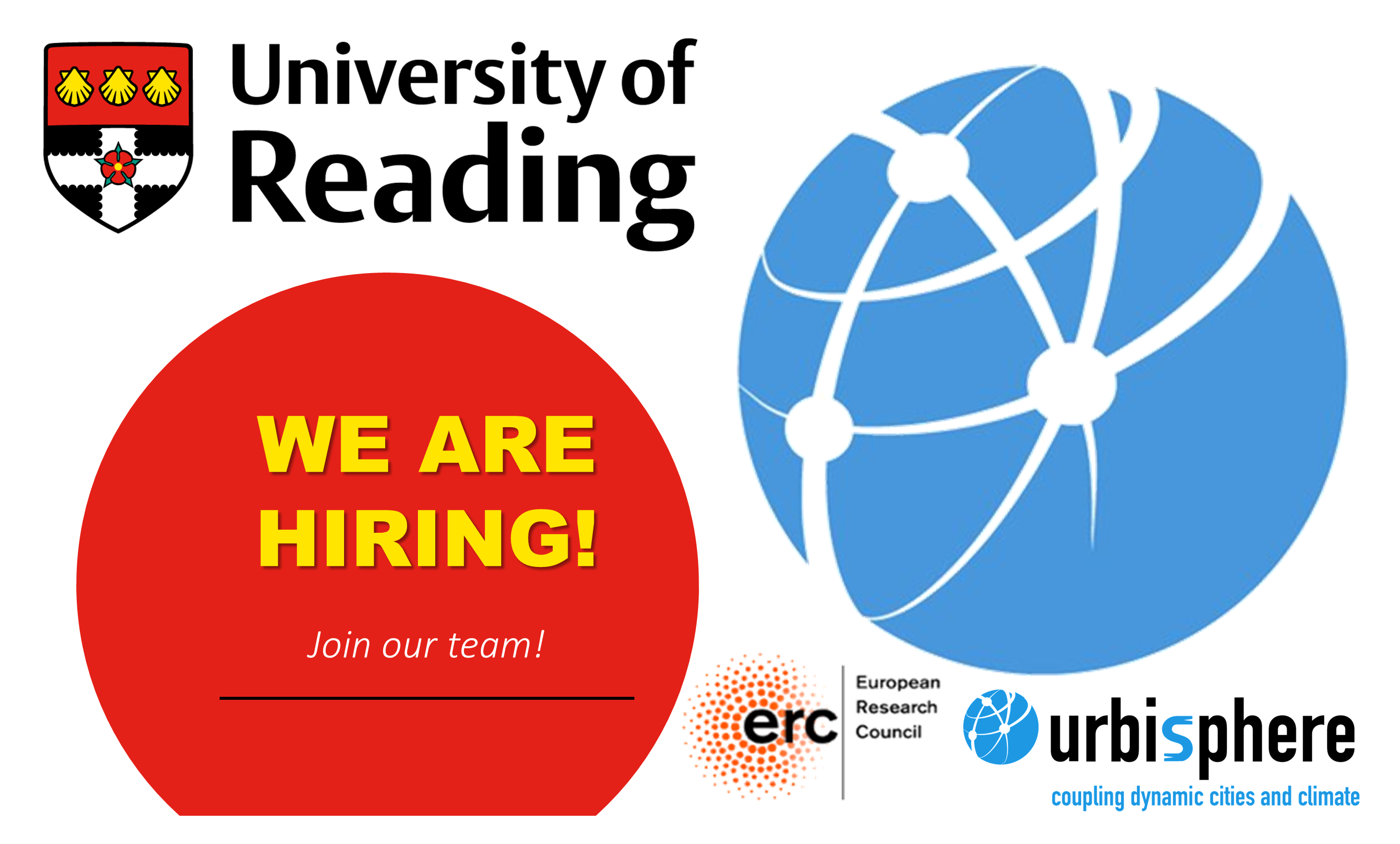Job Announcement

Project Title: Spatial variations of the urban boundary layer - what are the feedbacks from anthropogenic heat fluxes?
Department/School: School of Mathematical, Physical and Computational Sciences – Department of Meteorology
Supervisors: Prof Sue Grimmond, & Met Office: Humphrey Lean, Sylvia Bohnenstengel, Joelle Buxmann
The next generation of weather models will have high resolution sub-km modelling. These will be used to inform critical decisions about how cities operate day-to-day into the future. At this scale, different neighbourhoods of a city can be distinguished. The proposed research will focus on the spatial variation of the boundary layer across cities in response to neighbourhood scale variations in heat emissions from human activities (the anthropogenic heat flux). Working with ERC urbisphere’s (http://urbisphere.eu/) network of sensors across Berlin to assess spatial variability, will provide much needed insights into the impact of human activities and how they vary across cities; i.e. controlling the release of heat into urban areas (e.g. from buildings and vehicles) and the influence of this. The observational data will be compared to those simulated with next generation of Unified Model (UM) (~100m grid resolution). The key focus will be to consider the impact of spatio-temporal variations in anthropogenic heat fluxes on the boundary layer height. This will evaluate a new anthropogenic heat flux model being put into the UM urban surface energy balance scheme. The goal will be to assess if the dynamic feedbacks in anthropogenic heat fluxes enhance modelling of urban-atmosphere exchanges.
This will build on previous MO/University of Reading studentships to enhance model skill and to explore the spatial variability of urban processes. It will draw on the aerFO (aerosol backscatter forward operator) enhanced by collaborative research, for ceilometers. This project will use new state-of-the-art ERC urbisphere observations (e.g. CL61, CL31 ceilometers, Doppler Wind Lidars and scintillometer) to allow spatial variations in boundary layer characteristics and sensible heat fluxes.
Through ERC urbisphere the student will attend meetings with international partners and have the opportunity to be involved in urbisphere fieldwork.
You can find more details about the position and how to apply in the following link:

